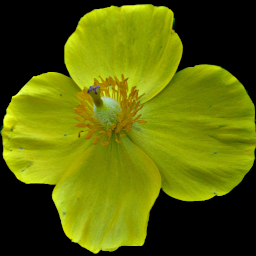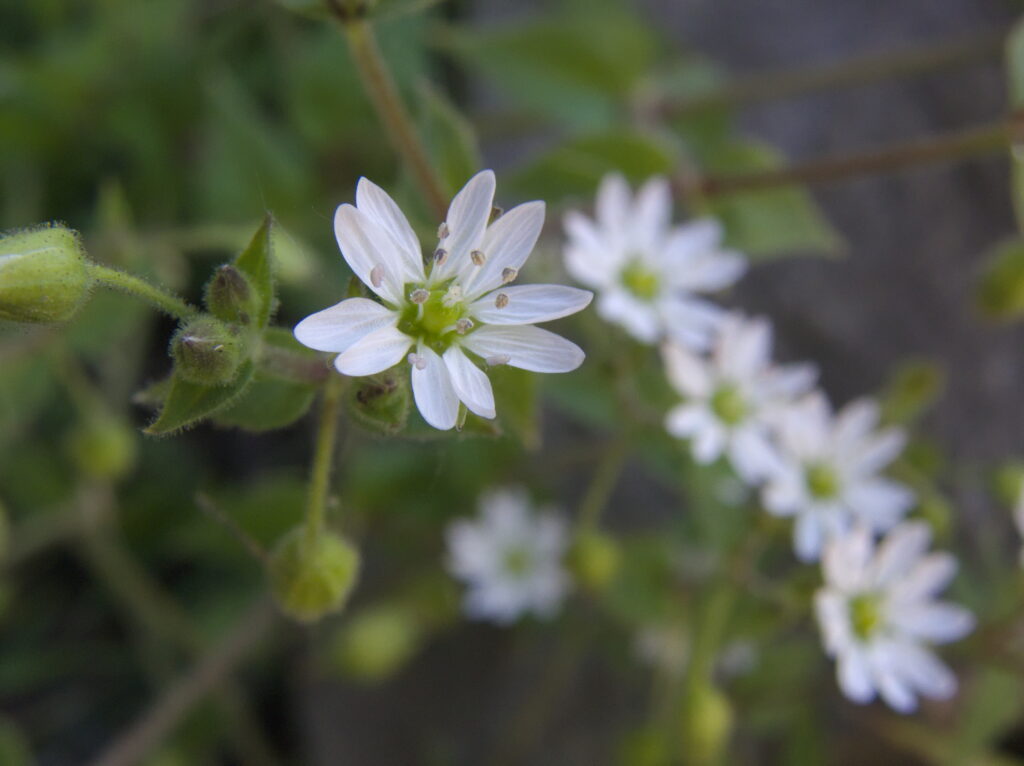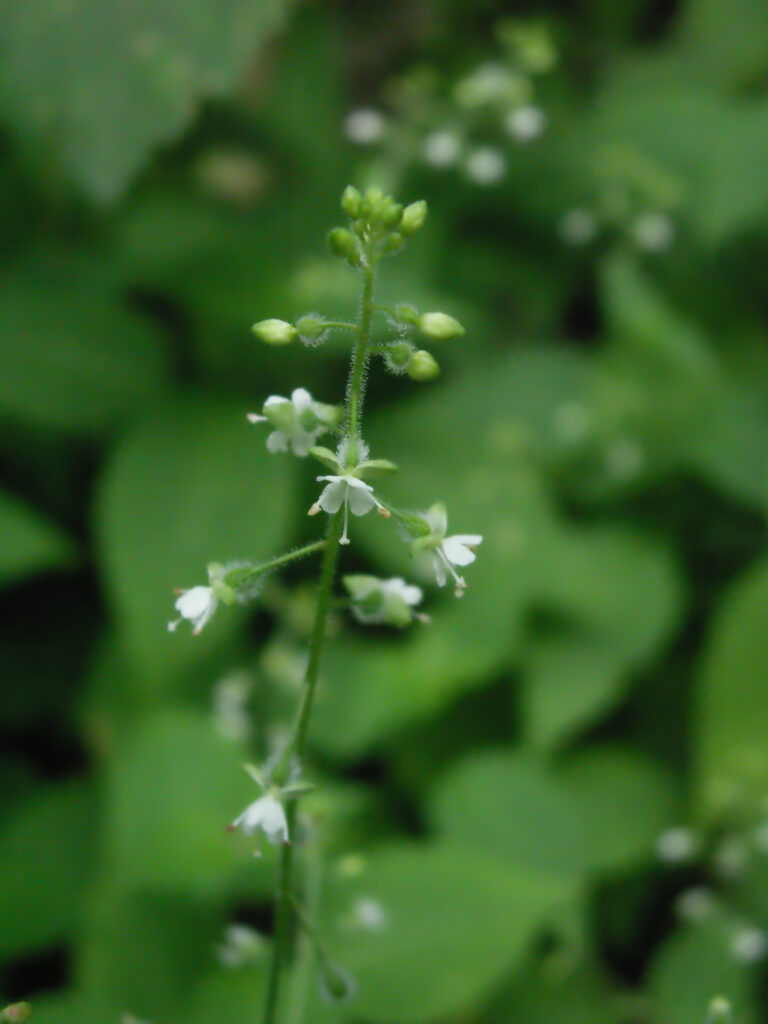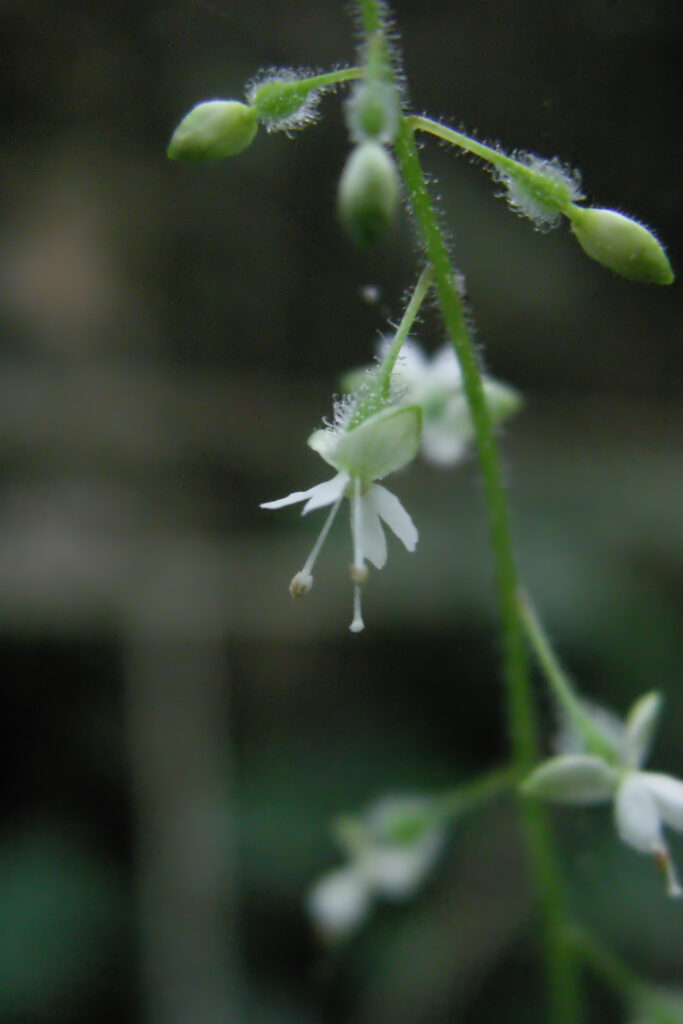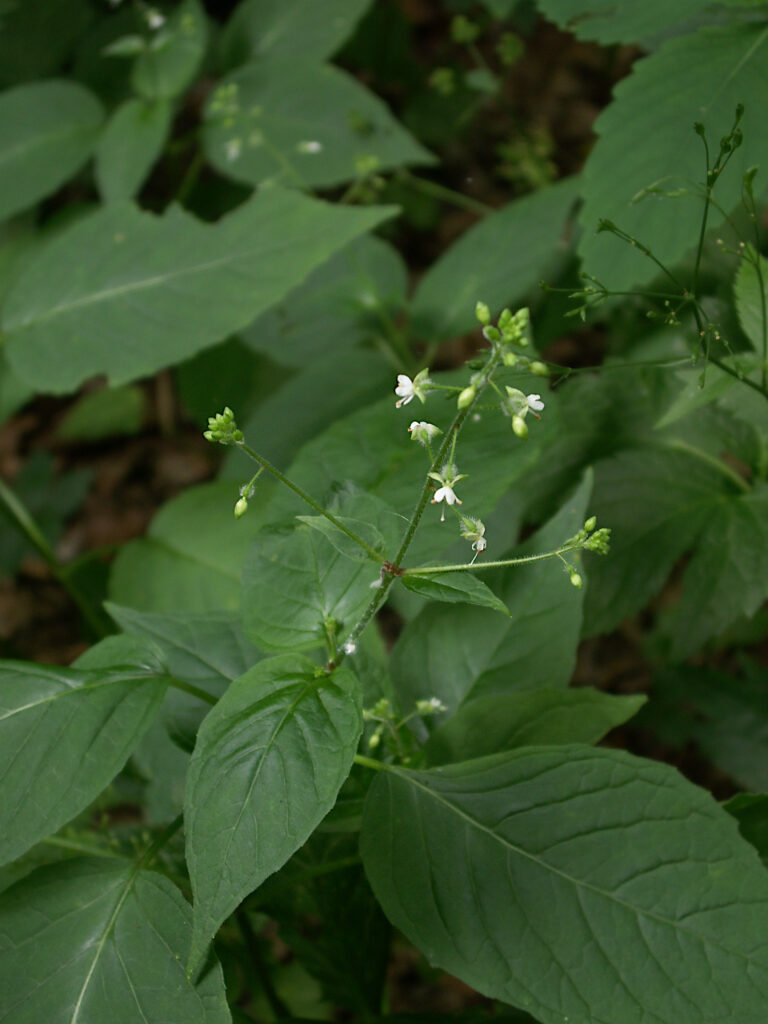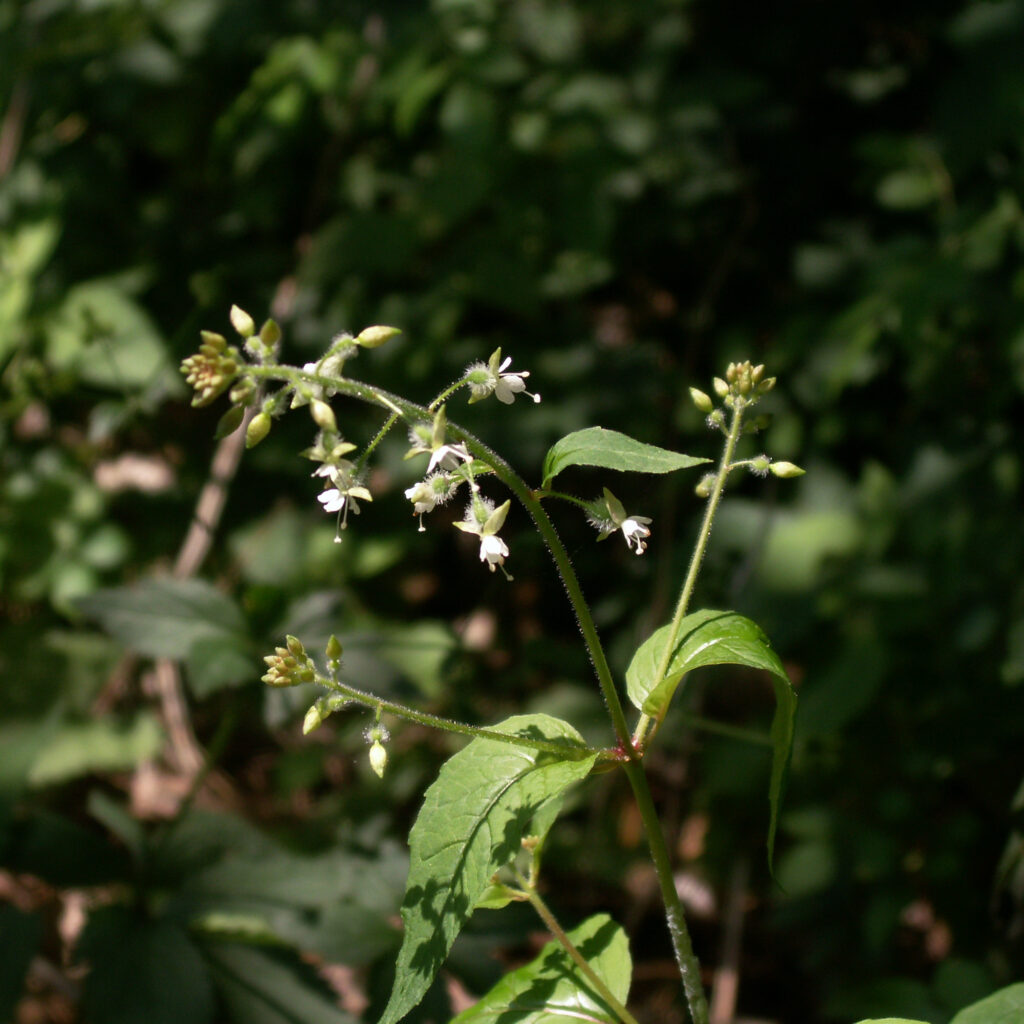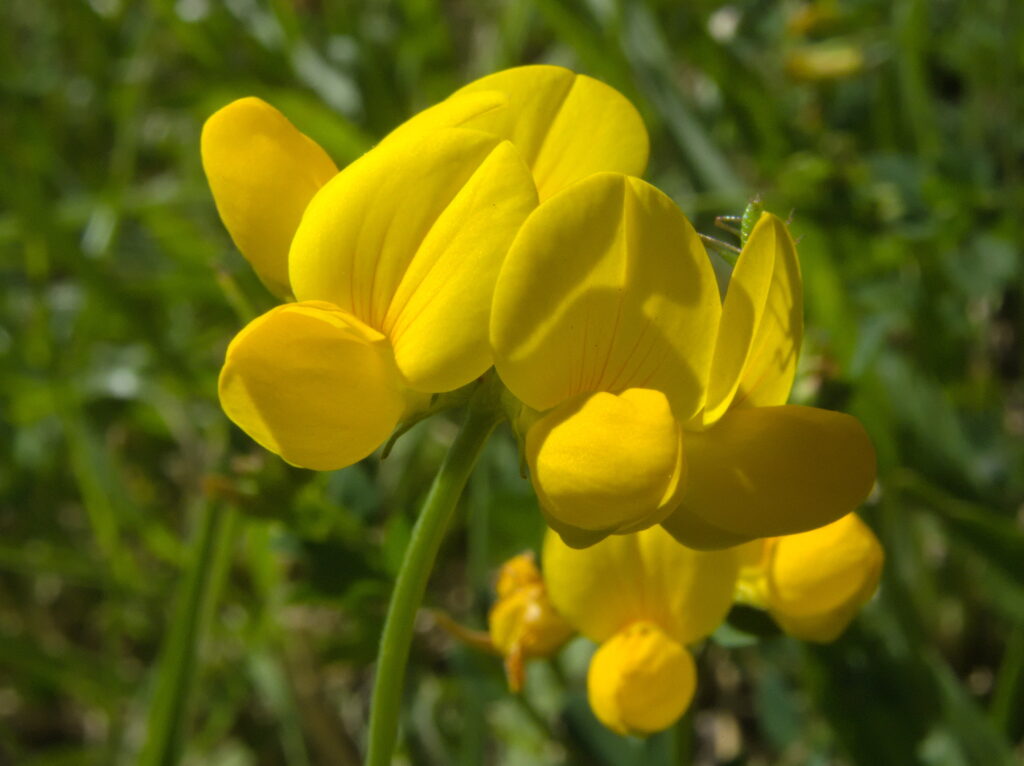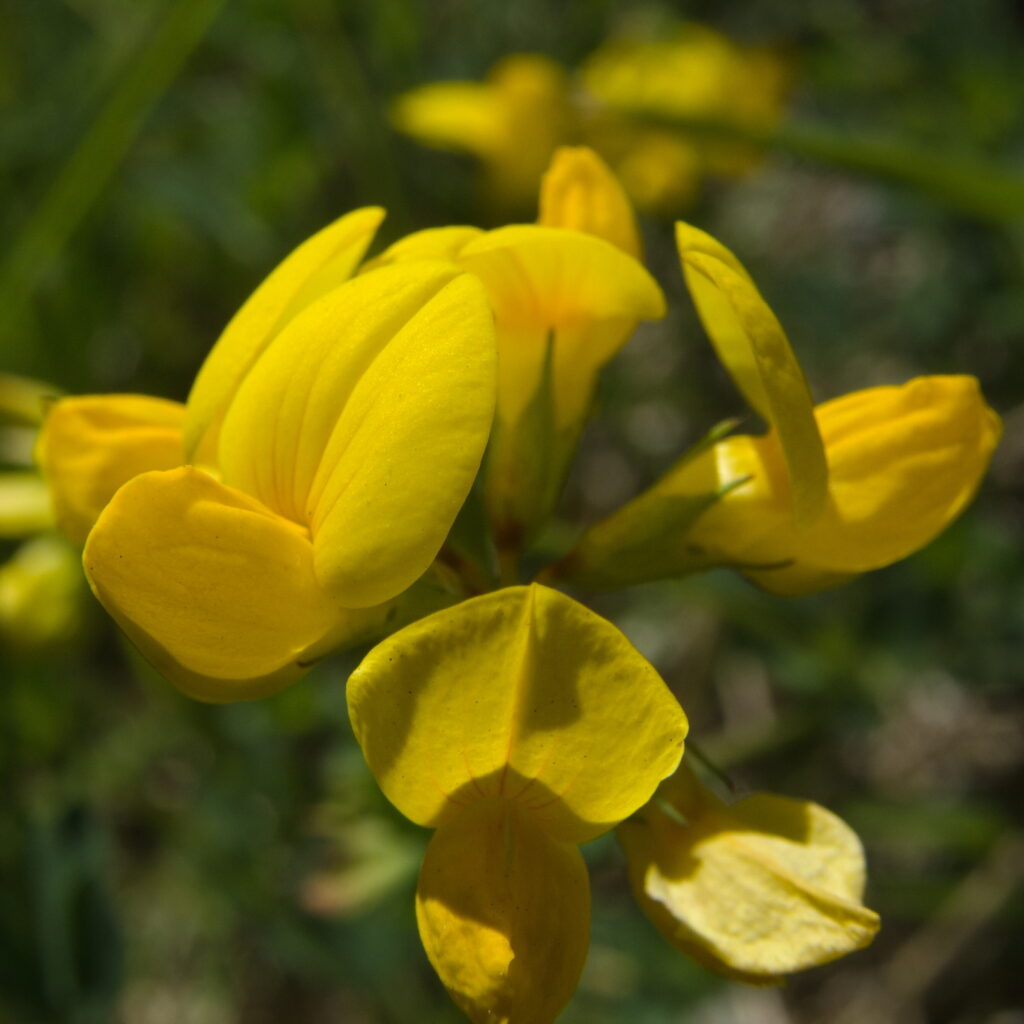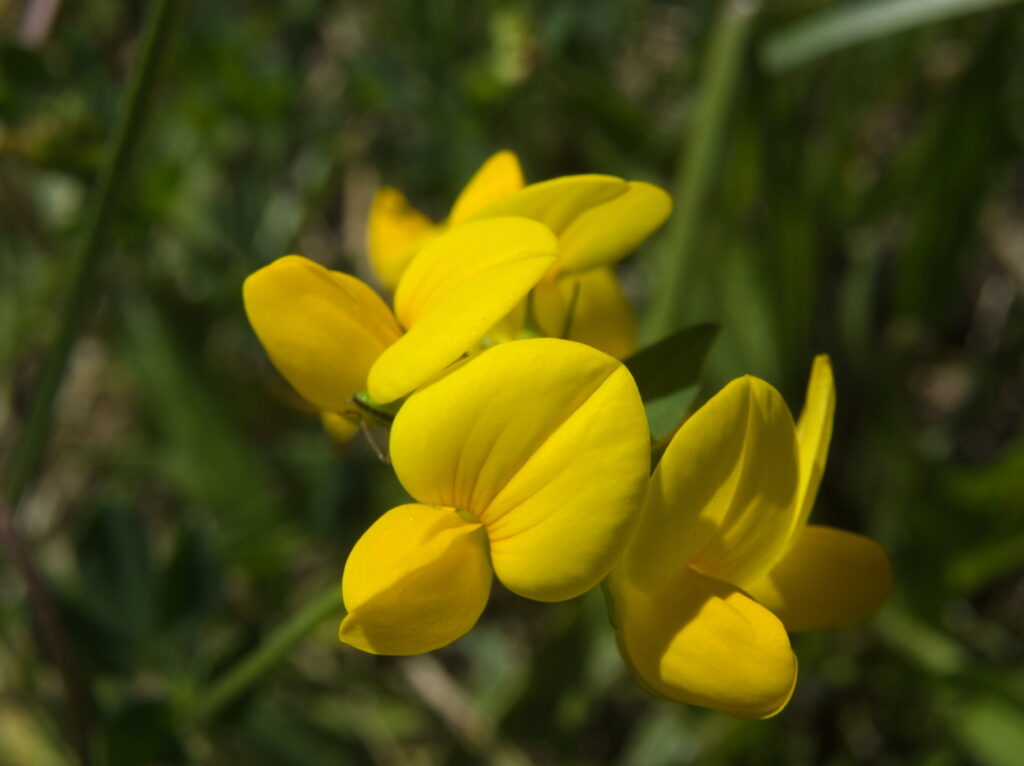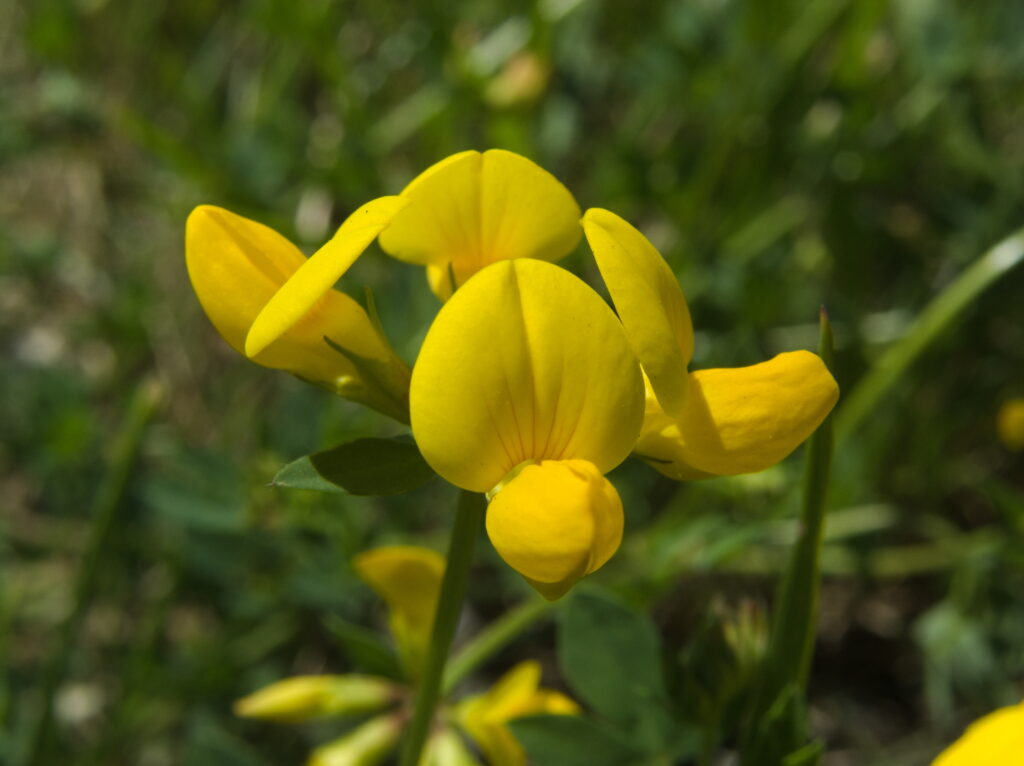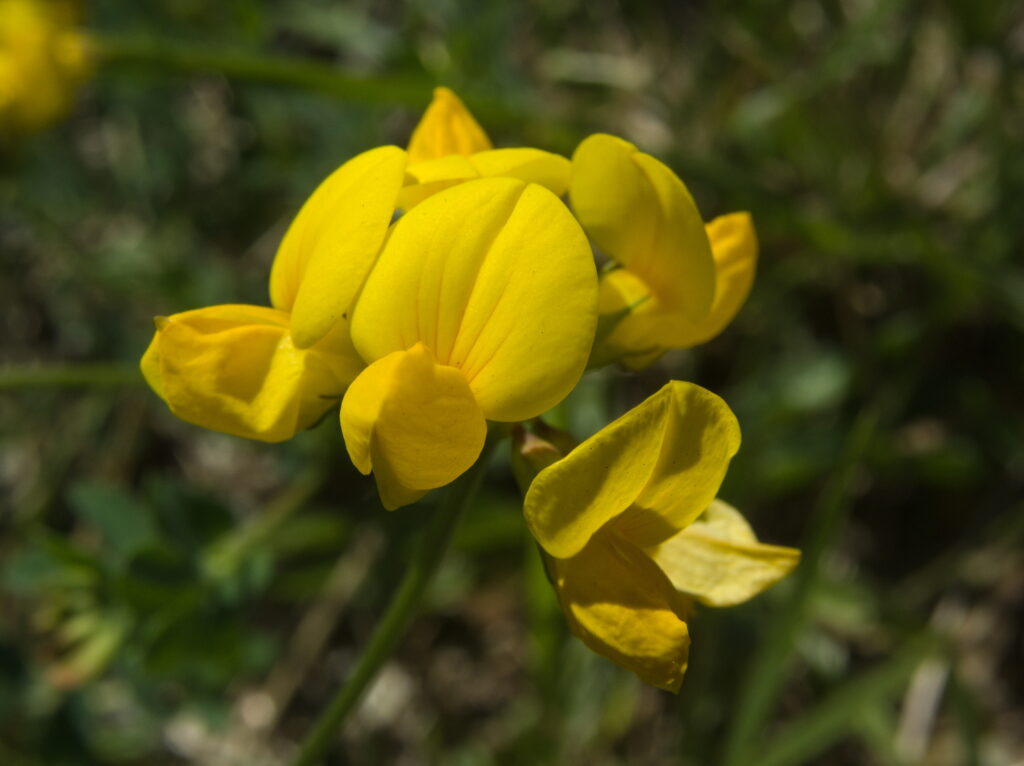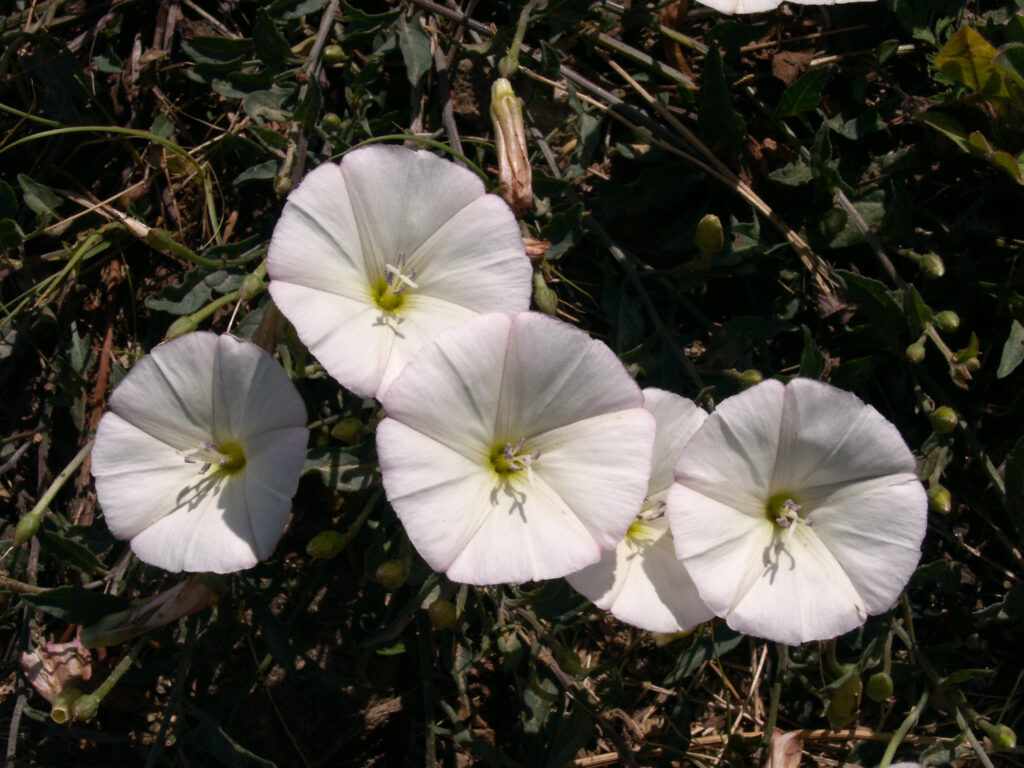
A delicate-looking little morning glory that mostly clambers along the ground and is well adapted to survive in frequently mowed fields.

It seems to make bees happy, and we approve of things that make bees happy. The bee gives us a good idea of the scale of the flower.

Colors vary from pure white into deep pink, often with stripes.
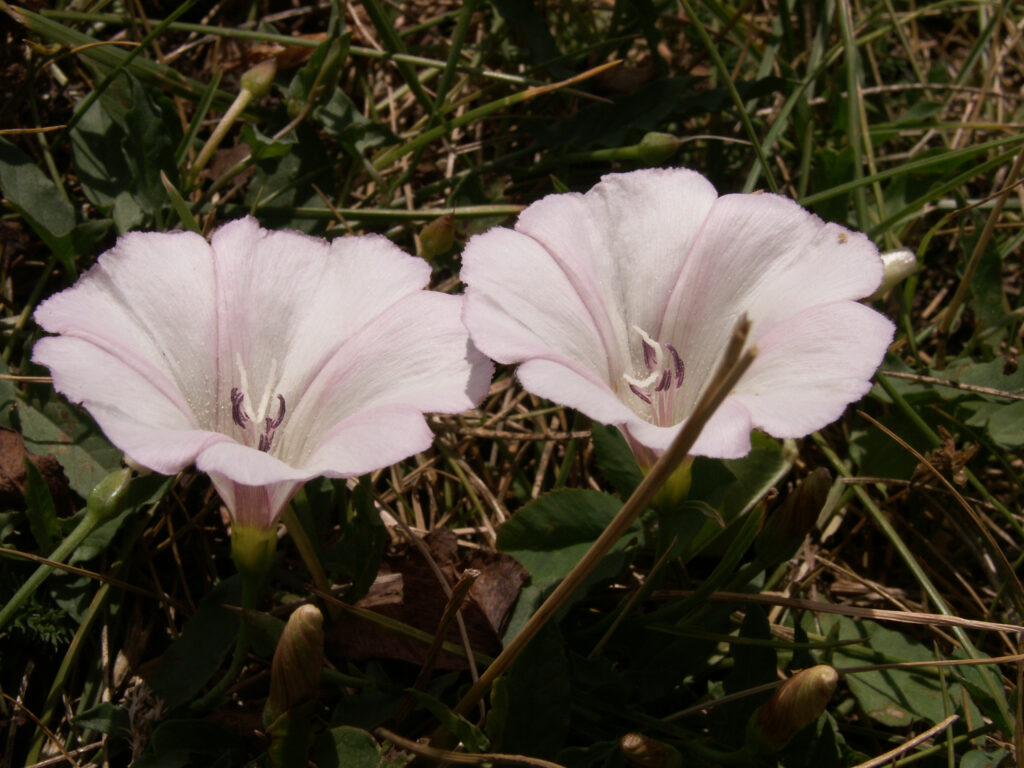
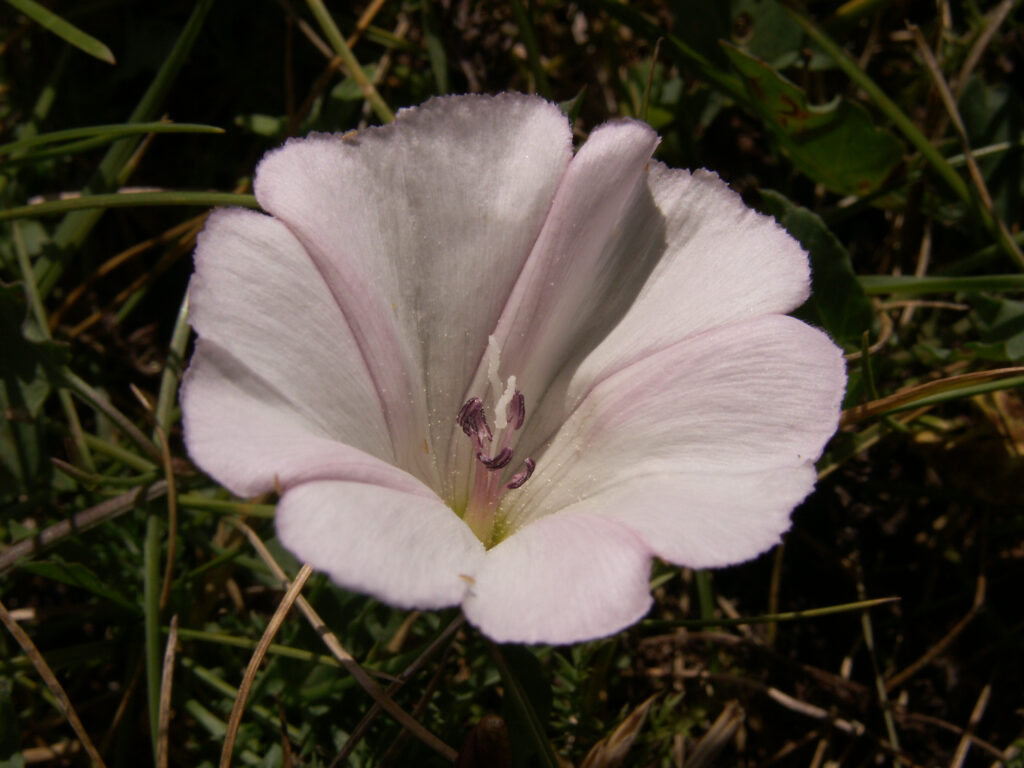

These plants were all blooming in St. Peter’s Cemetery in the Arlington neighborhood of Pittsburgh.
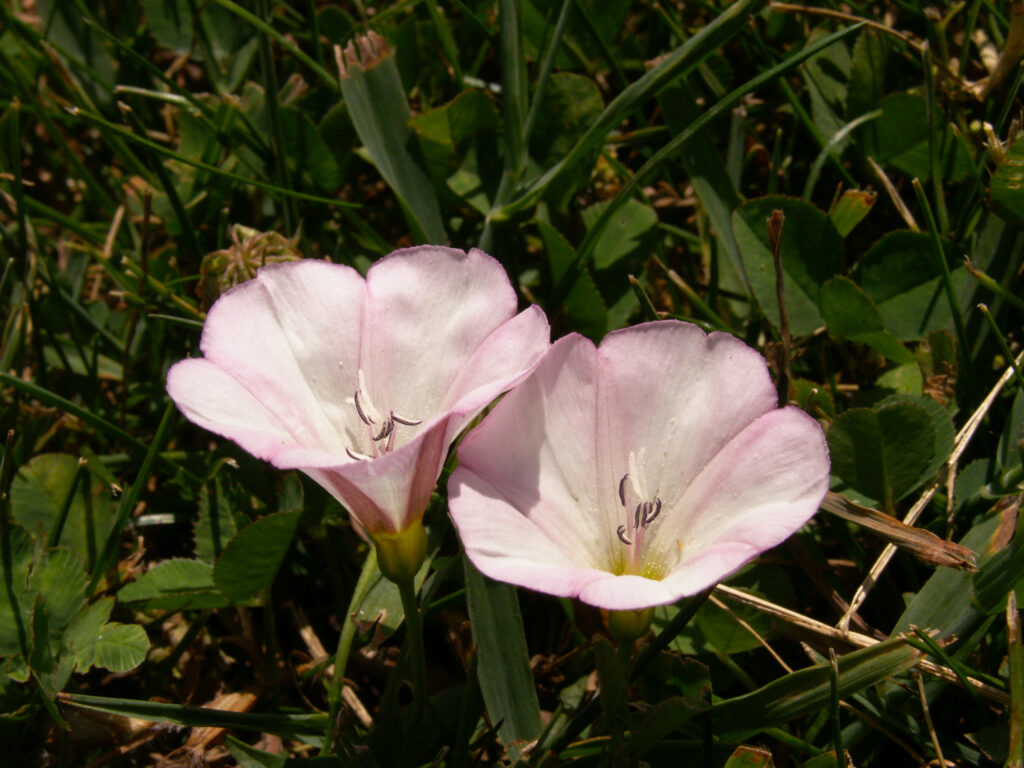
For a description of the species, see the Convolvulus arvensis reference page.
